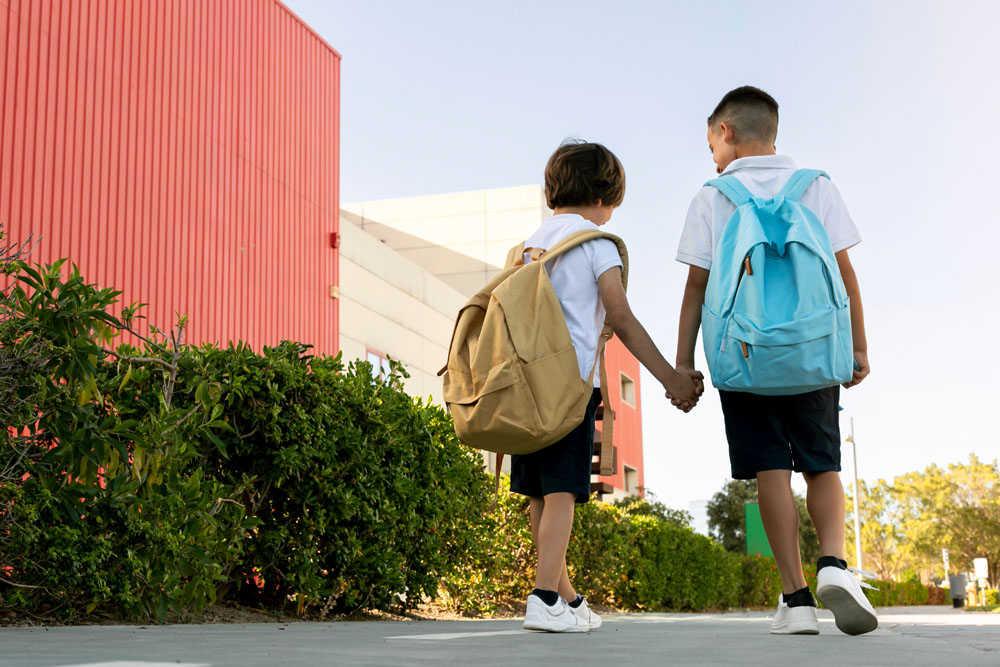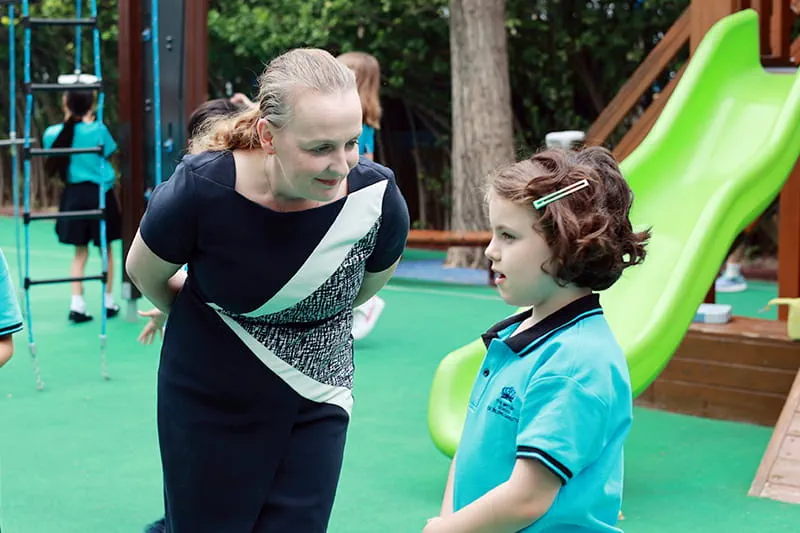Changing schools is a big milestone in a child’s life. Whether it’s moving from preschool to primary, primary to secondary, or shifting into an entirely new system such as an international school, these transitions are accompanied by a mix of excitement, nerves, and adjustment.
For families moving from the curriculum of a local school to an international one the changes may feel even bigger — new teaching styles, a stronger emphasis on global perspectives, and perhaps, even a different language of instruction. For expatriate families, these transitions may also involve cultural shifts as well as the challenge of settling into a new country.
For parents, the process may feel just as daunting. After all, you want your child to thrive, to make friends, and feel at home in their new setting. The good news is that children are often far more resilient than we expect them to be. With the right support at home, and school, these transitions can be transformed into a smooth journey that enables the children to cultivate independence and confidence.
Here’s how parents can help make these transitions smooth and effective for their children.

1. Start Talking About the Change Early
Children adjust best when they know what to expect. Start these conversations well before the transition happens. Share positive aspects about the new school — the chance to make new friends, exciting facilities, or new subjects they will have the opportunity to learn.
For younger children, keep explanations simple and clear. Instead of saying, “You’re moving to a different system,” you could say, “You’ll have a new teacher and new classmates. It will be fun to learn together.” Older students need to be involved in discussions about differences in curricula, extracurricular options, and even commuting logistics.
2. Visit the New School Together
If possible, arrange a school tour before the first day. Walking through the classrooms, playground, and cafeteria helps children visualize what their new daily routine would look like. They can see, for instance, where they’ll deposit their bag and where they’ll sit. It might even be a good idea to try the food in the cafeteria. This approach transforms the unknown into something familiar.
Many international schools also offer orientation sessions or ‘taster days’. Attending these allows children to meet classmates and teachers in advance and in so doing ease first-day jitters.
3. Acknowledge Their Feelings
Transitions often trigger a variety of emotions — excitement, fear, sadness, and, perhaps, even anger. It’s important not to brush these off with statements like, “Don’t worry, you’ll be fine.” Instead, validate your child’s feelings by saying, “I understand you’re nervous about making new friends. That’s normal. Lots of children feel the same way.”
Encouraging open conversations gives children the confidence to articulate their feelings rather than to repress them. This is likely to reduce the level of stress they may experience
4. Keep Routines Consistent at Home
While the school environment changes, the home can remain a safe and stable anchor. Maintain familiar routines such as family dinners, bedtime rituals, or weekend activities. This consistency gives children a sense of security during a time of upheaval.
Small comforts — like a favourite stuffed toy for younger children or a consistent after-school snack — also reinforce the feeling that some things remain the same even as external changes occur.

5. Foster Social Connections Early
One of the biggest worries children face is making new friends. Parents can ease this by helping them connect socially before school begins. Some schools share class lists or parent WhatsApp groups. Feel free use these to set up playdates or meet-ups before the new term starts,. Older children need to be encouraged to join clubs, sports, or music groups in the first few weeks. Shared activities are natural spaces for friendships to grow.
6. Stay Involved Without Hovering Over Them
Parents often feel the urge to solve every problem, but children also need space to adapt on their own. Strive to strike a balance: between the two. Monitor activity regularly with gentle questions like, “Who did you sit with today?” or “What was the most fun part of school today?” At the same time, resist the urge to micromanage every detail.
Trust that the teachers have sufficient knowledge and experience to provide students with the kind of oversight and support they need. Work out a partnership with the school by staying in touch with your child’s homeroom teacher or counsellor while at the same time allowing your children to build resilience on their own too.

7. Look Out for Signs of Stress
While some nervousness is normal, look out for prolonged and significant changes in behaviour —such as sleep disruptions, frequent stomach aches, withdrawal from activities or people, or general irritability. These may be signs that your child is struggling more than usual.
If this happens, step in with extra reassurance and, if needed, seek guidance from school counsellors. Many international schools provide pastoral care teams who specialise in helping students manage transitions.
8. Encourage Independence
Transitions are an opportunity for children to grow and mature. Encourage age-appropriate independence such as packing their own school bag, managing homework schedules, or planning after-school routines. These small responsibilities give children a sense of control and confidence in their new environment.
9. Share Your Own Stories
Children find comfort in knowing they’re not alone. Share stories from your own childhood about starting at a new school or moving to a different class. Talk about how you felt at that time. You were nervous, too, but gradually made friends and settled in. This normalises their experience and shows them that challenges are part of school life and can be overcome.
10. Celebrate Significant Milestones
Finally, celebrate the wins, big or small. It could be as simple as surviving the first week, making a new friend, or trying out for a new club. A family dinner, a small treat, or even words of encouragement can go a long way in boosting your child’s morale and guiding him in the right direction.
Final Thoughts
School transitions are a part of every child’s learning journey. While change may feel overwhelming at first, it also builds resilience, adaptability, and social skills. As parents, your role isn’t to eliminate all difficulties, but to walk alongside your child offering reassurance, encouragement, and patience.
With the right support, children don’t just ‘get through’ transitions — they thrive, grow, and acquire the confidence to embrace new beginnings. And if your family is considering the move to an international school, remember there are plenty of options to explore. Each school offers its own strengths, values, and community. Investing time and effort to research and visit schools can go a long way in enabling you to make the right choice, and find the right fit. In these ways, you enable your children to manage the transition smoothly and effectively and to experience the joy and excitement that is likely to accompany it.
Read more here:
- STEM �ؿ�ζSM in Asia: Trends Parents Should Know
- Schools in Thailand Offering the American Curriculum
- Bilingual �ؿ�ζSM in Asia’s International Schools: A Growing Priority
















![[St. Joseph’s Institution International School Malaysia] The Lasallian �ؿ�ζSM Ethos for a Better Future - Gratitude and Giving](https://eda.sgp1.digitaloceanspaces.com/production/TfRAxzU6ATHvsmC0lblUPD8peQ36lt.jpeg)




